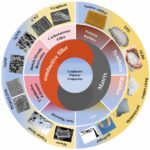 Imagine a world where precise genetic editing could restore sight or even revolutionize cancer treatment. Well, researchers from Helmholtz Munich and the Technical University of Munich are bringing us closer to that reality with an innovative delivery system called ENVLPE. This breakthrough enhances the efficiency of CRISPR/Cas9 tools by using engineered, non-infectious virus-like particles for accurate gene correction. In a remarkable demonstration, ENVLPE restored vision in mice suffering from mutation-induced blindness. This technology is not just a glimpse into the future of vision restoration but also holds promise for advancing cancer treatments by allowing precise genetic manipulation of immune cells. You can find the detailed study in the journal Cell.
Imagine a world where precise genetic editing could restore sight or even revolutionize cancer treatment. Well, researchers from Helmholtz Munich and the Technical University of Munich are bringing us closer to that reality with an innovative delivery system called ENVLPE. This breakthrough enhances the efficiency of CRISPR/Cas9 tools by using engineered, non-infectious virus-like particles for accurate gene correction. In a remarkable demonstration, ENVLPE restored vision in mice suffering from mutation-induced blindness. This technology is not just a glimpse into the future of vision restoration but also holds promise for advancing cancer treatments by allowing precise genetic manipulation of immune cells. You can find the detailed study in the journal Cell.
Delivering CRISPR tools to target cells has always been a bit tricky. Traditional methods like adeno-associated viruses and lipid nanoparticles have their limitations. Dr. Dong-Jiunn Jeffery Truong from Helmholtz Munich explains that ENVLPE overcomes these hurdles with its modular design, paving the way for future advancements. By utilizing modified virus-derived shells as carriers, ENVLPE ensures the safe delivery of gene editors into target cells, making this system a game-changer.
Working alongside UC Irvine’s ophthalmology team, the researchers tested ENVLPE on mice with a disabling mutation in the Rpe65 gene, which is crucial for retinal function. The results were nothing short of astounding—post-treatment, the mice regained their vision. This showcases the immense therapeutic potential of ENVLPE. Compared to existing methods, this system achieved better results with much lower doses. Niklas Armbrust, a co-first author of the study, shared that their goal was to create a tool that benefits both researchers and practical applications.
ENVLPE’s potential doesn’t stop at vision restoration. It offers exciting possibilities for cancer therapy, particularly in adoptive T cell therapies. By enabling the removal of specific surface molecules that trigger immune responses, this system could help create “universal” T cells. This would simplify treatments and cut costs, addressing critical challenges in gene therapies for both inherited diseases and cancer.
Professor Gil Westmeyer from TUM highlights the significance of ENVLPE: “The highly modular ENVLPE system significantly advances precise genetic modifications, showcasing synthetic biology’s role in medical innovation.” Looking to the future, the research team aims to enhance targeting precision with AI-assisted protein design, tailoring delivery to specific cells or tissues. As they seek further funding and industry partnerships, their ultimate goal is to bring this technology to clinical use, optimizing it for a wide range of therapeutic applications.








